UTS 50 k - The build up and race
My trail running seasons in 2023 and 2024 felt very much like I was learning what I needed to do to perform in a race environment quite outside of my comfort zone. That comfort zone was flat races lasting less than 30 minutes - I was now competing in races that challenged me over mountains for 4-6 hours.
I loved that challenge and performed quite well, despite feeling like I had a lot to figure out.
A part of me wants to say that 2025 is no longer about learning that new discipline. No longer about figuring things out. It's about performing. It's about putting what we've learned into action.
That sounds like the sort of thing I *should* say. Full of confidence and bravado.
In truth, I don't want to get to the point where I think I have everything figured out. Figuring things out - what I need to do to compete on these different stages - is a big part of the fun.
The coaches and athletes I most admire don't just repeat the same training year on year. They tweak things, build upon things that worked and develop their understanding around what could be improved.
If you think you have the sport figured out then it will move on without you.
The aim for 2025 is the same as it has been the last years: get better. Keep making progress. Big steps or small - keep moving forward.
The Training
My 2025 racing calendar splits the year into two parts:
UTS 50k (17 May, 55 km, +3500 m)
OCC (28 August, 55 km, +3500 m) / World Championships, Short Trail (28 September, 42 km, +3500 m)
Two blocks of training where I can make improvements from where I've been in previous years.
After racing the Arc 25 (40 km, +1000 m) in January, my focus switched to UTS 50k in May. That gave me 16 weeks between the races - 1 ‘recovery’ week, 14 weeks of training, and 1 taper week.
In those 14 weeks I averaged:
10 h 50 m running, 121.8 km (75.7 mi), 4340 m
2 h 54 m cycling
1 h 22 m S&C
I had 12 planned days off running in those weeks. These generally contained a 3-4 h easy bike ride. One was a travel day. I also had six unplanned days off running with two short bouts of illness.
In general, my weeks looked a bit like this:
M - Easy run (40-60) / Easy cycle (60) and S&C (20)
T - Threshold session uphill, or Easy run with strides / Threshold session flat or uphill
W - Easy run (40) / Easy run (80)
T - Long Cycle (3-4 hours) / S&C (40)
F - Longer threshold session uphill or stairs
S - Easy run (80) / S&C (20)
S - Long run (2.5-4 hours) / S&C (40)
I say in general, because most weeks didn’t look exactly like this. Things get moved around and runs shortened or lengthened. The program adapts much more fluidly than an idealized seven day cycle.
I like Frank Shorter’s famous quote on training - ‘two hard workouts, a long run, and as much mileage as you can handle. Repeat for years’. It is a good description of what my training generally looks like (for this block and going back many years!). There are details, which I'll get into, but I think that big picture (particularly the ‘Repeat for years’ part) is probably the most important factor.
From the last few years experience, we identified what we thought worked and a few areas we could tweak to try to get better. Here are a few thoughts on some of those things.
Threshold sessions
I rarely run much above threshold (LT2) in training. I find that if I control the intensity in sessions I can do more work, more consistently. That consistency has a big impact on my fitness. I know my heart rate zones from testing we’ve done with the Elite Trail Team, but I also find that I know the feeling well enough to run to feel. I tend to repeat similar sessions, e.g.:
3 x 10 mins (1-2 mins rest)
6 x 6 mins (1 mins)
10 x 3 mins (45-60 s)
20-25 x 60-70 s (30-60 s)
These all end up at a similar ‘intensity’ - in terms of lactate or heart rate - but I think it is good to mix up the speeds in training. The longer blocks of effort will naturally be slower and the shorter blocks faster for the same intensity over the session. I'm just looking for that feeling of hard, sustainable effort - and mostly finishing with a few more repeats in the tank.
I quite often doubled up with two threshold sessions in the same day - and in this case I try to mix the speeds up during the day and/or mix running uphill or flat. I don't think there is any particular magic to double threshold. It can just be a convenient way of getting in a bit more work into a single harder day. Later in the block I focused a little more on single, longer sessions.
Indoor treadmill/stairs
At the start of the block I ran a fairly even mix of flat (road or track) and uphill (treadmill or stairs) sessions. Towards the end of the block I focused more on uphill sessions only.
Training on the treadmill or stairs isn't the most exciting, and it doesn't condition your legs for the downhill you'll have in the race, but it is time-efficient and great for intensity control. I also find that it doesn't cause much muscle soreness compared to equivalent flat efforts - which can make it easier to add more intensity into the week.
I did a few outdoor climbing efforts as well - mostly in long runs - but the majority of my uphill running was indoors and it seemed to work well.
Turnover
In OCC last year, I was in great shape but I felt like I had lost some of the ability to turn my legs over faster. I have a naturally low cadence and need to make sure I include things that force me to access higher cadences.
In general, that comes down to a few things:
Including flatter sessions and shorter blocks in intervals regularly
Strides - uphill or flat, in the warm up before a session or during an easy run. Normally, 4-6 x 15-20 s with 60+ s of rest.
I also started including some micro intervals on the uphill treadmill. My go-to was 3 x 12 x 30 s (20 s/2 mins) on 15% gradient. These were run fast, but the frequent rests (straddling the treadmill belt) meant that the intensity remained around or below threshold.
I raced at the London Winter Run 10 km near the start of the block and ran 29:22 without much specific training. That gave me some confidence that my turnover and flat speed was in a good place despite not having worked on it especially much.
Long runs
Last year, my long run tended to be about 3 hours and was either run at a steady effort (similar to a 5-6 hour race effort) or included sections of that effort or harder. I think these runs are incredibly valuable as they give a big training stimulus, are specific to the race, give opportunity to practice fueling and other race strategies, and don't take too long to bounce back from afterwards.
However, my legs struggled in the second half of OCC and we decided to include some longer long runs to try to help with that conditioning. In this build up, I also did 3 runs over 4 hours (my longest for OCC last year was 3 h 20 m). Two of these runs also included some element of faster running.
These longer runs allowed me to accumulate more climbing and descending in a single bout than I have done previously. In a 3 hour run I can accumulate around 2000 m of elevation gain/loss. In the 4+ hour runs I ran 2500-3000 m of elevation gain/loss - closer to what I would do in the race.
S&C and Downhills
I am not the fastest downhill runner - particularly on steep, technical descents. I am OK but I knew it was an area where I could improve - either through higher skill or better conditioned legs. I hoped that a little more focus on the downhills and more consistent strength training would help lessen the muscle damage I experience later in races.
I increased the amount of strength work I have been doing. I aimed for 2 30 minute heavier strength sessions (including some heavy, low rep lifts, some plyometric-type exercises, and some muscular endurance, high-rep work) and 1-2 lighter rehab type sessions per week. I was quite consistent with this and I averaged almost double the amount of S&C as before OCC (1 h 22 m compared to 42 m).
I ran some faster downhills in training - both in the long runs and in other runs when it made sense during the week (i.e. I didn't want to leave myself too sore before a session or a long run).
Volume
I increased my volume a little this block but almost entirely through cycling. Whereas in previous years I would run every day, I have taken a day fully off from running most weeks this year. On those days I normally included a 3-4 hour cycle, which increased my training hours from previous blocks. I'd rather increase the hours via running, but hopefully this serves as a good middle ground and is a little less risky injury-wise.
I averaged around 30 minutes less running and 90 minutes more cycling per week in comparison to OCC. That seemed like a fair trade.
I did some short periods where my running volume was significantly higher than average. For instance, I went to France for five days in April and ran 13 h 15 m whilst I was there (including a 4 h 25 m long run). These short periods of higher volume were followed by easier recovery periods.
The Race
I don't normally use any specific mantra during races but as I was going through my planning I decided to try one.
'Stay in the race'
The idea was to remind myself that it's a long race and as long as I stay in it, I have a chance. Save energy, look after myself, and make the best if (when!) things go wrong. It's a long way to run and there will be good bits and bad bits.
I stuck with Luke Grenfell-Shaw on the first climb up Yr Wyddfa. The pace felt a bit fast but manageable. Once on the descent we slowed a bit and were caught by Jonas Hesthaug and Sylvain Cachard. The four of us entered the first aid station close together.
I pulled away on the second climb up Yr Wyddfa. A little over halfway up, I had some cramp in my right adductor. I walked for a bit and it eased off quickly but it was quite concerning that it happened with so much running to go.
'Stay in the race’
I made it over the summit in the lead but the cramp hit both adductors partway down the descent. I stopped and tried stretching which didn't help at all. I walked for about a minute before it started to ease - just as Sylvain caught and passed me. I latched onto him the best I could and we reached the next aid station together.
I pulled away again on the climb up Mynydd Mawr. A few warning feelings in my legs near the top forced me to ease off a little but otherwise I still felt strong and full of energy. The cramps again struck my adductors partway down the descent. I walked, ate and drank. After what felt like a long time they eased and I could run again. Sylvain didn't catch me this time. All I thought was: he must be suffering as well.
I was through the final aid station at Betws Garmon without seeing anyone behind me. I made it up the final climb, Moel Elio, quite efficiently considering. I still felt like I had good energy, but now whenever I pushed my legs would respond with little warning cramps. I eased off and focused on managing my effort.
From Moel Elio to the finish was unpleasant. Lots of little warning cramps from my adductors and also my calves. What had been separate incidents now were semi-constant threats. My ankle was also increasingly sore from a slight twist hours earlier. Thankfully, there was no one in sight behind and I just had to get myself to the finish.
With about 3 km to go, I had my last larger bout of cramp: both calves and some adductors. I walked for a bit, then had to cross a stile - which set it off again - then walked a bit more. Amazingly, I made it down the steep road into Llanberis without any more cramping.
1st place, 5 hours 33 minutes 22 seconds.
My longest race to date and certainly the toughest. Happy to take the win against a competitive field. Given the number of times I wrote the word ‘cramp’ above, you'd think it was a bad race, but it was not. In between the cramps I felt strong. Clearly a lot of the training has worked. The cramps are an issue to investigate, but I'm happy with how I dealt with them and managed my way through the race.
What went well?
I once again managed to get to the race fit, healthy, and excited for the challenge. Never underestimate the power of that. You might be able to gain a few percent by tweaking things in training, but arriving to a race tired, burned out, injured, or unexcited will cost you more than anything.
General fitness - I got to the race with good general fitness and I think that showed in the uphill’s where I felt strong. It's strange to say that my legs felt strong even late in the race when they were prone to cramping but that is what I experienced.
Fueling - 114 g/h carbs, 1 l/h water, 1160 mg/h sodium, 390 mg caffeine. No stomach issues whatsoever.
Mantra - The mantra ‘Stay in the race’ felt like it helped. It would have been easy to think ahead to the next 3 hours when I first had cramp but it brought me back to what I needed to do in that moment. A simple phrase but it reminded me what I needed to do.
Heat prep - Hot baths and a couple of saunas for the 3 weeks prior. 4-5 per week (3 in the last week) plus the indoor sessions which provide a stimulus of their own. It was a hot day but I didn't feel overheated at any point.
What could be better?
Two main areas stand out as things I could look at improving:
Pacing - I had worked out a schedule of splits for a 5:32 finish time at a constant grade adjusted pace. The plan wasn’t to rigidly stick to splits, but to run to feel and respond to the race dynamics. The splits were to help me understand how much food and water I may need to carry at each aid station.
I was 9 minutes ahead of this schedule at the top of the first climb. The first climb was always going to be faster than the average because it is less technical and you are still settling into the race, but 9 minutes is a bit much. A couple of minutes slower here could have paid off later in the race. I stayed 7-9 minutes ahead of that schedule until the last aid station, then lost 8 minutes in the last section.
Bwlch Glas - 53 / 44 (-9)
Gwastadanas Farm - 1:29 / 1:22 (-7)
Yr Wyddfa - 2:48 / 2:39 (-9)
Bron-y-Fedw Uchaf - 3:15 / 3:08 (-7)
Mynydd Mawr - 3:48 / 3:40 (-8)
Betws Garmon - 4:09 / 4:02 (-7)
Moel Eilio - 4:50 / 4:48 (-2)
Llanberis (Finish) - 5:32 / 5:33 (+1)
Cramping - I tend to put cramping down to inadequate preparation/strength, but these came on very early - at a point where I've run similar efforts in training without issue. The fast start probably contributed, along with the terrain (rockier than I'm used to), and the hot weather. I'll take another look at electrolytes/hydration and work on strengthening the areas that were most affected. The difficult part of this is the fact that I've had cramp in most of my longer races, but I've never been able to replicate it in training. This makes it difficult to diagnose and fix.
As I noted at the beginning, training is a constant process of learning, adjusting, and growing. Generally, the changes between training cycles are small. The biggest benefits come from stacking good training block on good training block - not from finding some secret formula.
There will be a few adjustments in the next few months of training - towards OCC and the World Champs. I'll take a lot of confidence in the parts that are working well.
First a rest.
Then back to trying to get better.
Thanks for reading to the end. I hope it you found it useful. Feel free to leave a comment or message me on Instagram if you have any questions or find something particularly interesting.


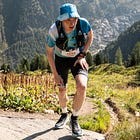
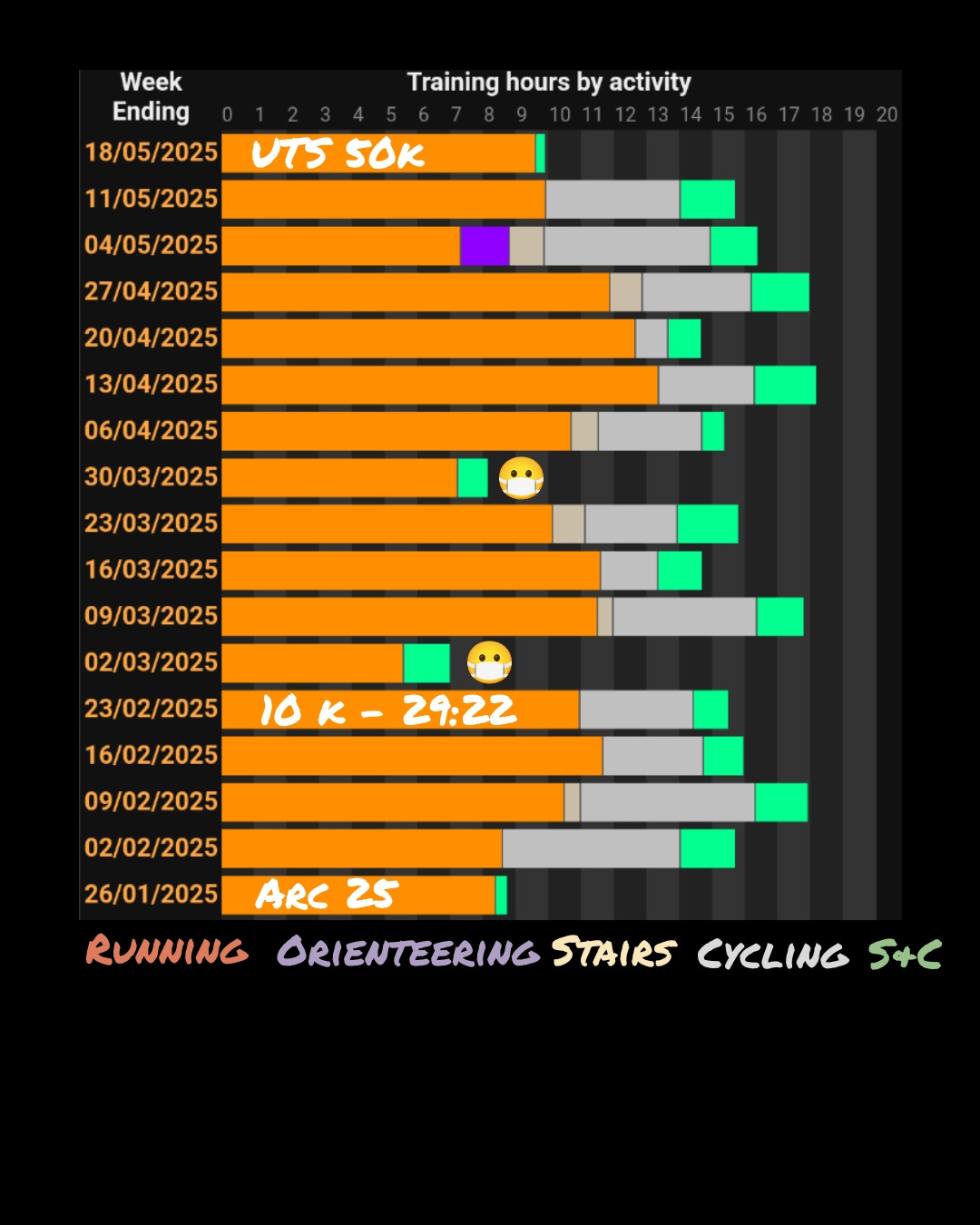
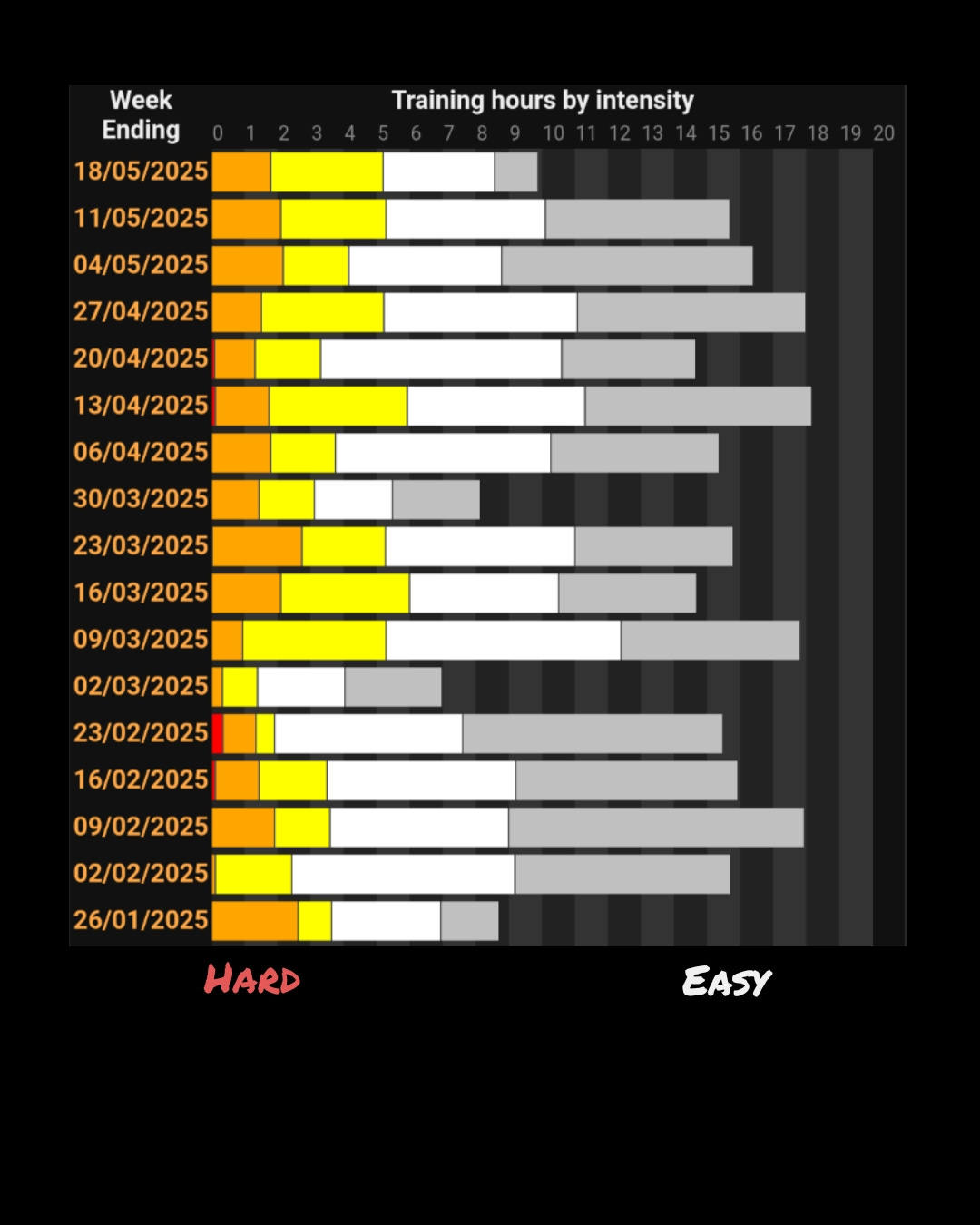
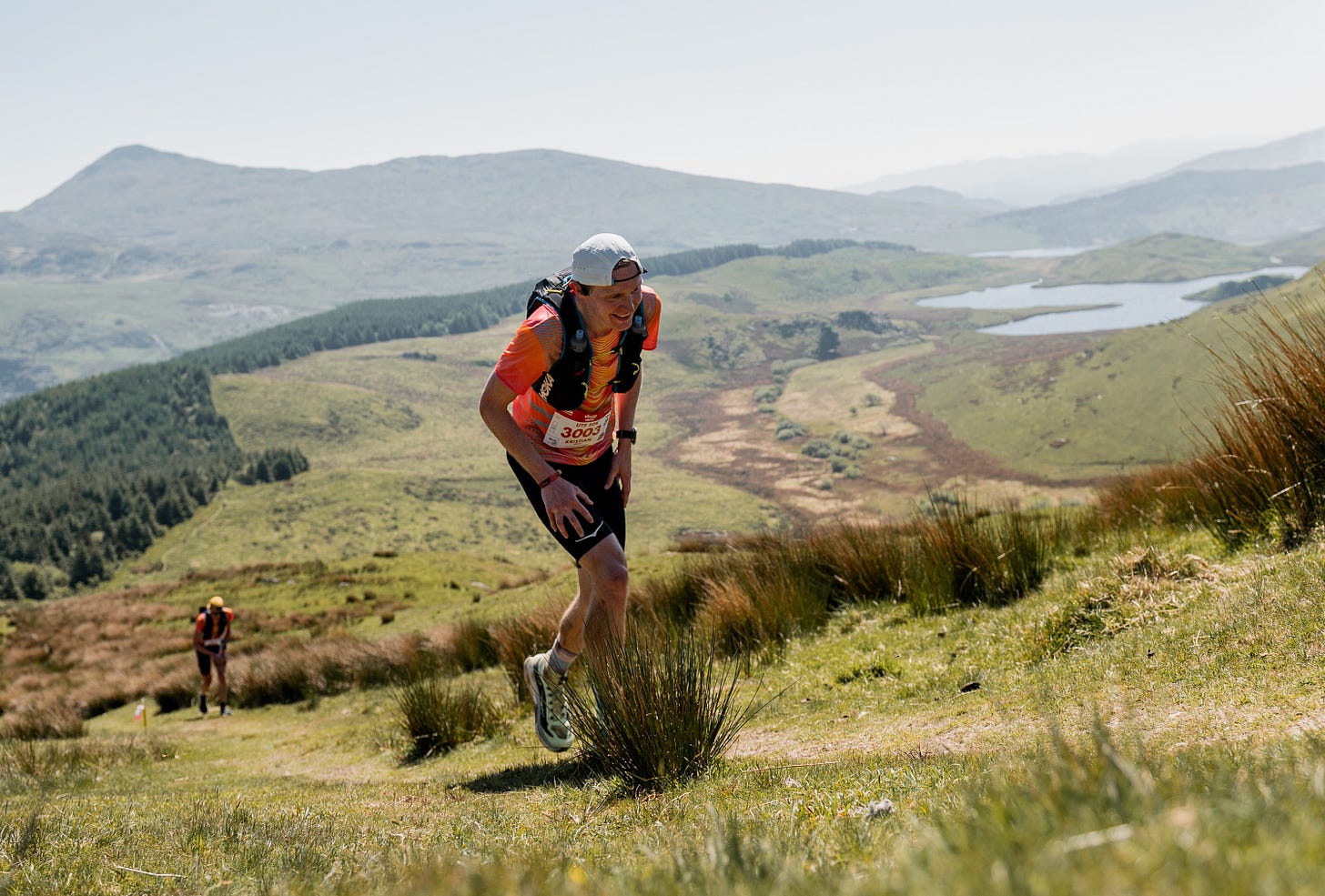
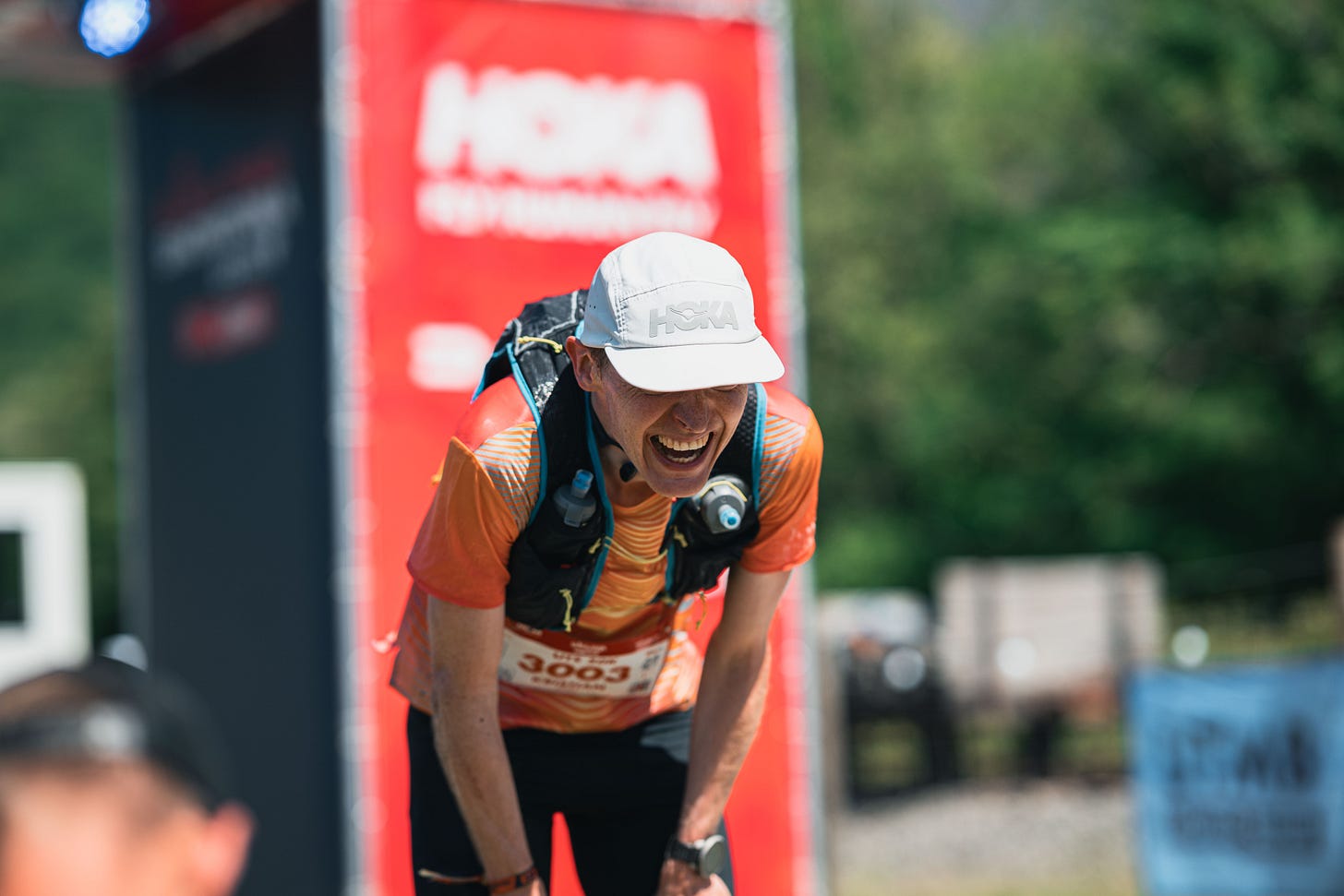
Sending support from across the pond in the US, loved this recap and appreciate the insight into your training and thoughts all throughout your prep for UTS. Keep up the great work!
Thanks Chris. I'm loving your openness and attention to training detail. One of our subscribers asked us to write articles that focus on athletes training plans. I'll send them your way.